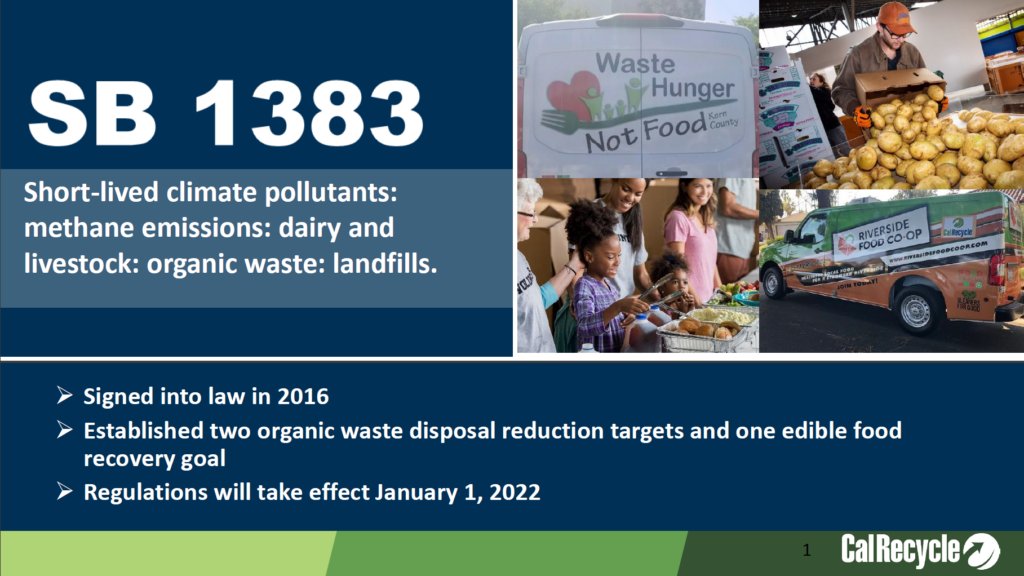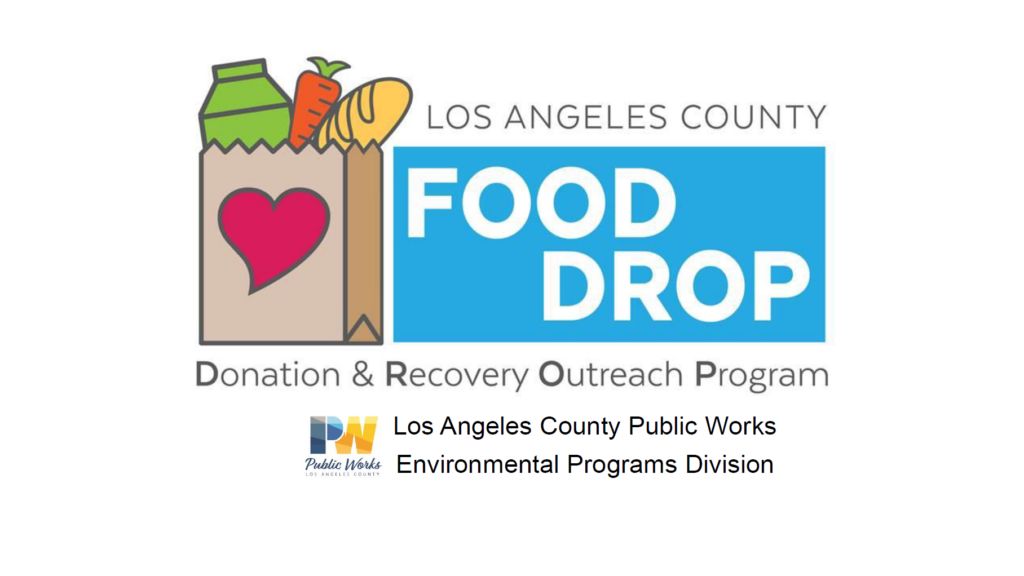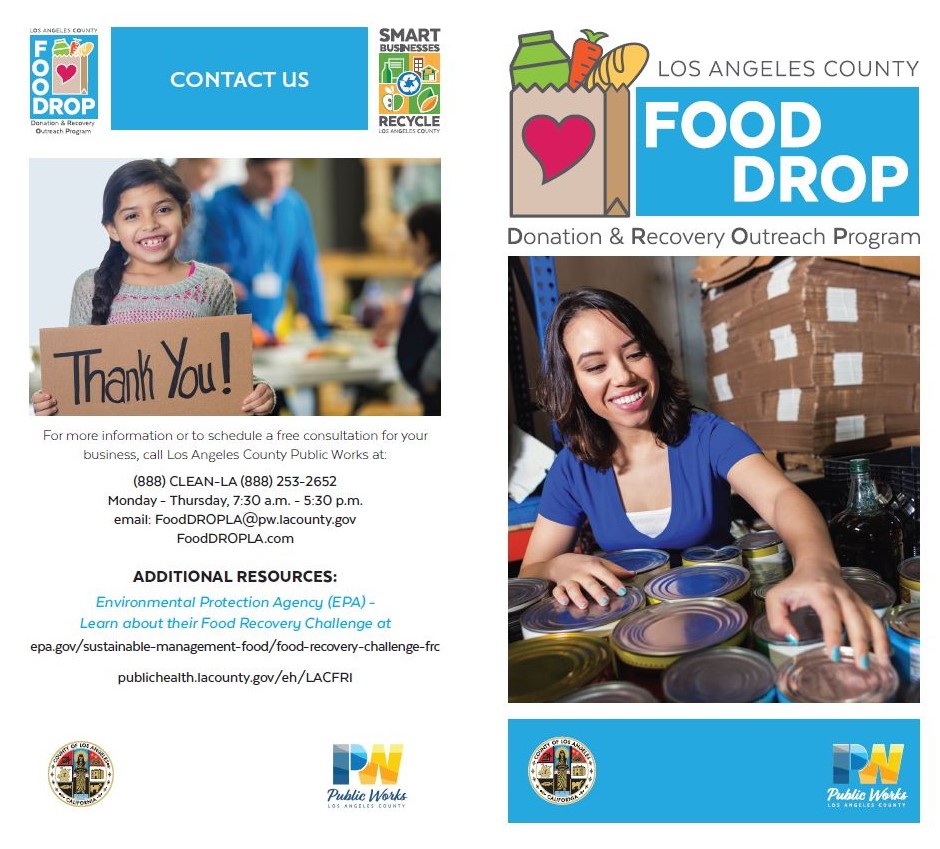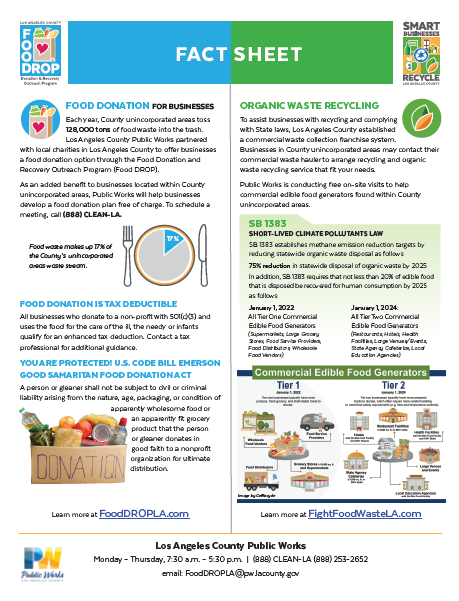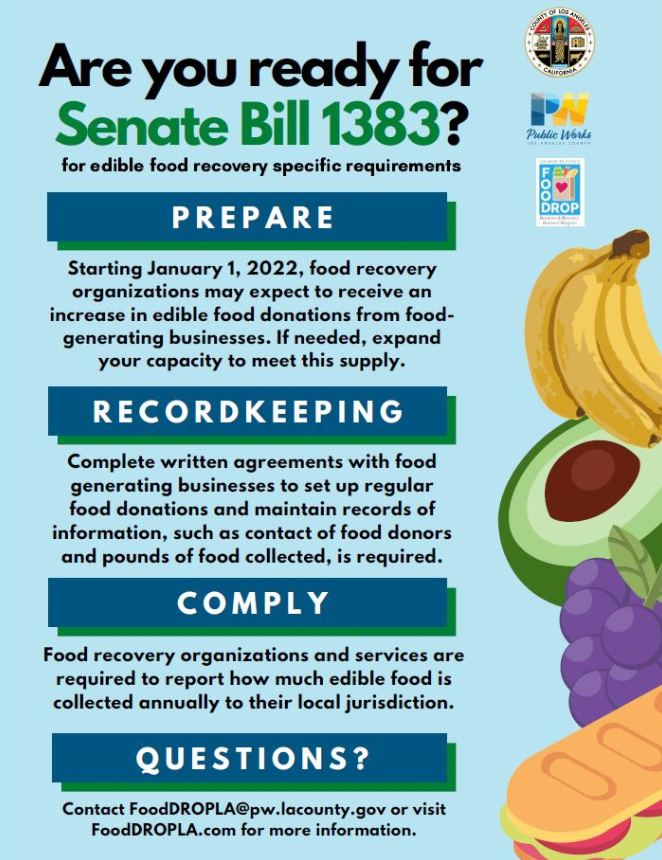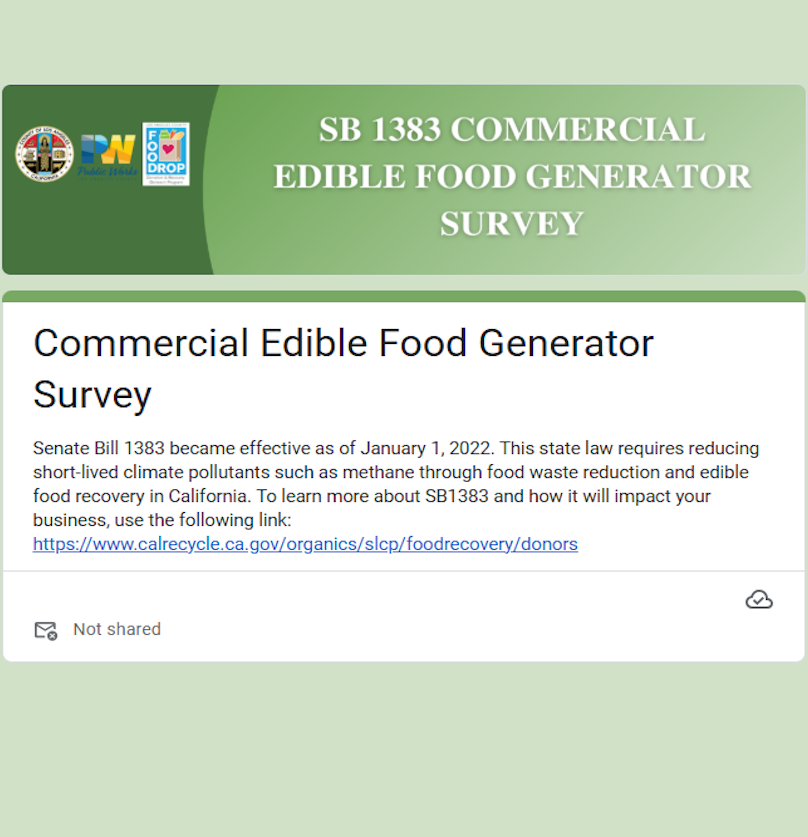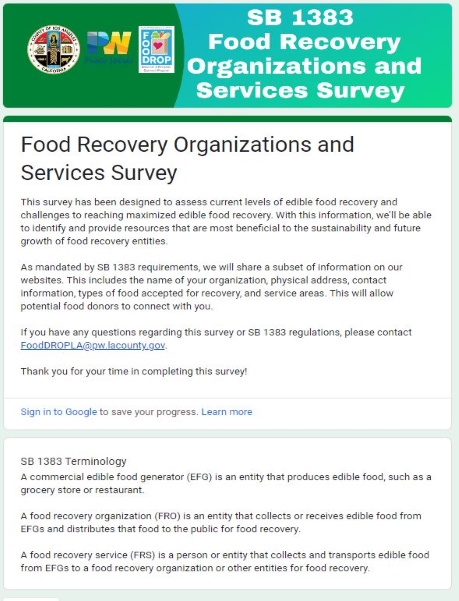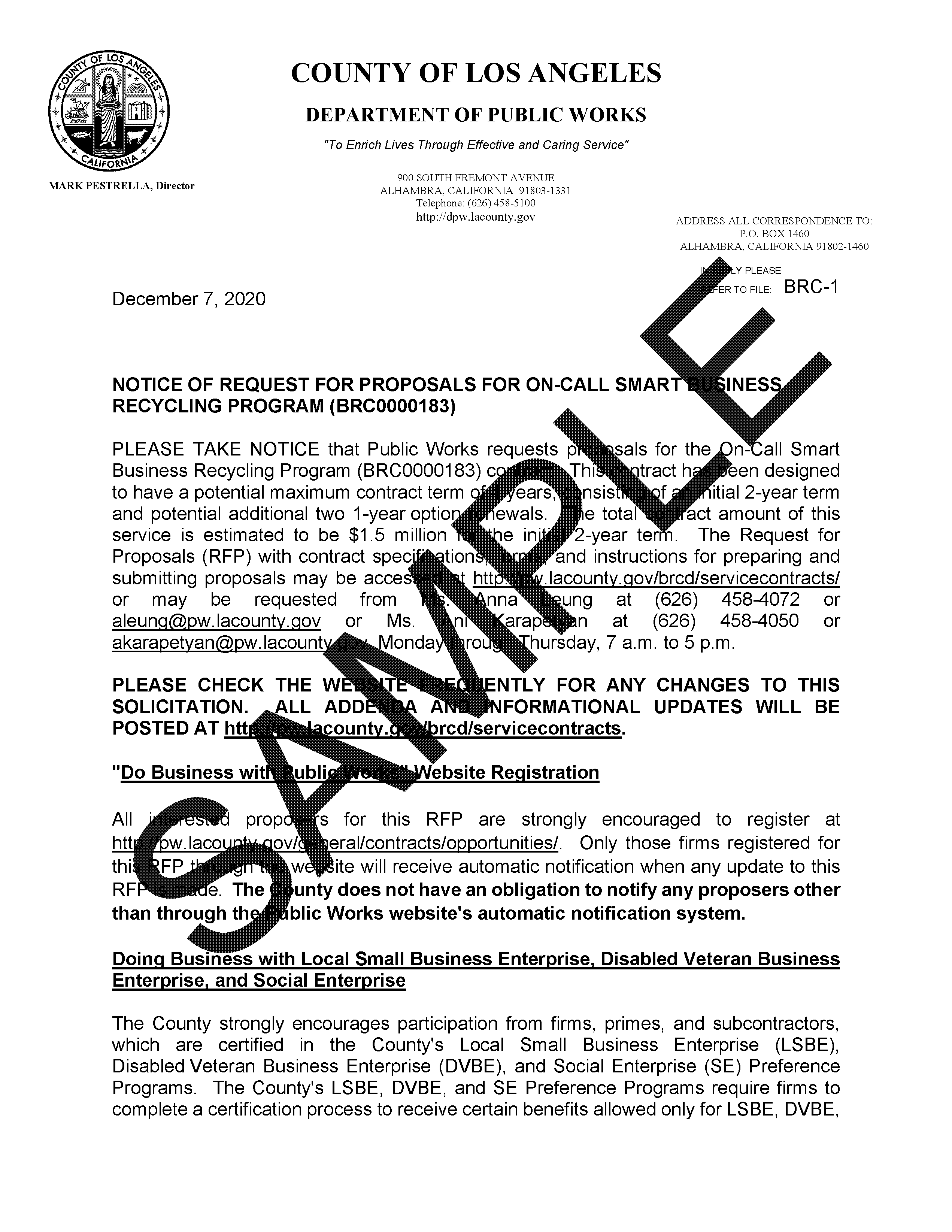Resources for Jurisdictions – Los Angeles County Edible Food Recovery
2024 Edible Food Recovery Capacity Planning
To learn more about the “2024 Edible Food Recovery Capacity Planning”, you may visit the SB 1383 Capacity Planning website.
General Information
Below are tools and resources available to assist jurisdictions in implementing or improving on their own edible food recovery program.
Outreach Materials Templates
Surveys
Food Recovery Organizations and Services (FROs/FRSs)
Other Templates
Los Angeles County Virtual Food Recovery Workshop Q&A’s Session
Q: What are the challenges you envision implementing per city?
A: One of the things that the County is seeing as a challenge right now is getting the data and the records from the businesses that are donating. This is going to be a requirement and jurisdictions are required to enforce these regulations and have businesses report that information to each jurisdiction. Also, recovering the maximum amount of edible food is kind of vague and ambiguous to determine exactly what that means in the regulation.
Q: The regulation states commercial edible food generators shall not intentionally spoil edible food that could be recovered for human consumption. How would this be monitored and determined?
A: CalRecycle added the language to make sure that nothing is being done to intentionally spoil the food if it’s still safe to be recovered and could be recovered for human consumption and for the maximum amount of food that could safely be recovered is going to its highest and best use of helping feed people in need. For enforcement, if jurisdictions suspect food is being intentionally spoiled or if they are notified there is a business that’s intentionally spoiling edible food, then they would need to investigate.
Q: Has CalRecycle reached out to large corporate Tier One and Tier Two generators about food recovery? Does CalRecycle have a contacts list for the recycling or sustainability coordinators for all the large corporate Tier One and Tier Two food generators?
A: CalRecycle have engaged with the California Grocers Association, California Restaurant Association, California League of Food Producers and other associations that tie to those corporate groups in the regulation and implementation process. CalRecycle has been working with Albertsons’ headquarter in Boise, Idaho and they have questions about how the regulation will look on a store by store basis and they also have existing contracts with Feeding America. CalRecycle is working on the list and will reach out to California Grocers Association to see what kind of information can be provided to help jurisdictions identify the sustainability coordinator at the corporate level.
Q: For the Public Health app, can you expand or clarify how Cities could potentially utilize the app for tracking food donation in their City specifically? Is there a way for the dashboards to be made available to Cities?
A: The COPIA app has the matching algorithm that ensures that there is no donation dumping or further waste into the dumpsters. The dashboards for the Counties and Cities will have access to show compliance to SB 1383. These dashboards show some of the impacts that each of these generators could make, but holistically an aggregate view of the total amount of waste identified for any participating business or genesis of food waste generator. The app also provides information to understand what the total waste looks like, what is edible, what is inedible, why, how much, when, what types. There’s a lot of information that’s going to help Counties and Cities make decisions to comply with SB 1383.
Q: Bakeries are the biggest offenders of overproducing and most food recovery recipients have too much. What kind of actions can the State help regarding bakery waste?
A: If a bakery meets SB 1383’s definition for “restaurant” and the threshold specified in the regulations for a restaurant, then that bakery will be required to comply. Most small bakeries, however, likely will not be large enough to be included in SB 1383. For bakeries that are not required to comply, CalRecycle can help by providing education about the importance of food donation and encouraging all food facilities to donate when possible. In addition, CalRecycle can provide education to help businesses generate less surplus food (e.g. promoting food waste prevention activities). Although we want to see the source reduction focus to reduce overproduction, we also recognize other outlets beyond food recovery. Weâve seen upcycling businesses using bakery waste to produce other products and then also recognize animal feed production can be an end use. Other organics processing can play a role too, like AD or compost.
Q: Many recovery agencies and donors have several locations and serve a specific geographic region, but there is plenty of cross over between cities. Would cities be able to utilize Food DROP program to promote food donation within each jurisdiction?
A: All Cities can utilize Food DROP resources, outreach materials, list of food rescue agencies, etc. and can link to Food DROP website on their own website. Cities can direct businesses to County Food DROP website for a list of food recovery agencies in the entire County and the information will be continuously updated. County’s Food DROP website identified all the food recovery agencies on the interactive map for Cities and businesses to locate the nearest food recovery agency with their contact information and the types of food they accept. City Coordinators can also utilize editable/sharable outreach information and resources on the Food DROP resource page.
